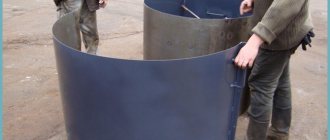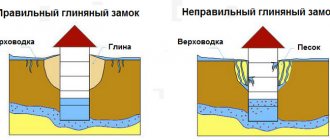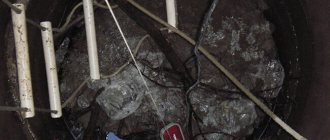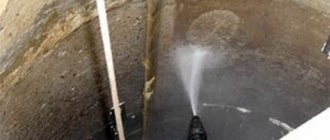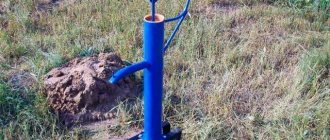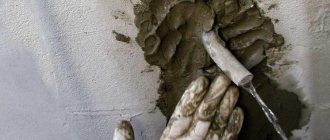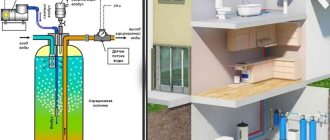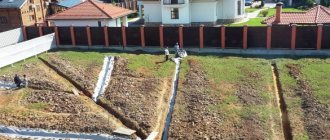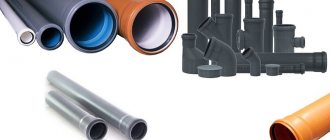Owners of private houses often have to build a sewer well with their own hands. There are many reasons for such a decision - from the need to carefully carry out excavation work to the inability to fit lifting equipment.
Often, a banal lack of money becomes an obstacle, even more so. that ready-made containers are quite expensive, not everyone can afford them. Therefore, the decision is often made to build a well yourself. This is not a very difficult task, but some skills and knowledge will be needed. It is necessary to study the standards, requirements for the installation of containers, and understand the rules for carrying out such work.
How to determine the location of a well when installing it yourself
When thinking about how to make a well for sewerage, the first thing you should pay attention to is its location.
It plays an important role in preserving the environment and the health of residents, because in the event of a break in the structure, wastewater will flow into the ground or come out when the septic tank overflows or the system silts up.
Sewage well location diagram
Particularly complex calculations are not needed in this case; all standards are specified in the corresponding section of SNiP.
This is how the sewer well should be located:
- no closer than 5 meters to a residential building;
- more than 1 meter from outbuildings;
- no closer than 30 meters to wells or wells with drinking water;
- 50 meters from the reservoir;
- 20 meters from the garden or vegetable garden;
- no closer than 3 meters to the fence of the site or highway.
Consider the low location of the well
In this case, the sewer well must be located in the lowest area of the land plot.
This way, it is possible to ensure the proper slope of the pipes with minimal volumes of earthworks, making the operation of the sewerage system stable.
The wastewater will move by gravity. Otherwise, you will have to use pumping equipment.
Installation of a well from scrap materials
The cheapest way to construct a sewer well is to use wood or tires for construction. Constructing such a well is also simple. A pit is dug, and once there, either tires are placed on top of each other, or the walls are lined with boards. True, sealing sewer wells in this case is a necessary procedure. Otherwise, there is a risk that wastewater will seep into the soil or even pollute underground sources.
Let's look at how to make sealing. If you use wood as a basis, then you need to carefully treat it with solutions. Fire retardants and antiseptics are suitable. Don't forget to seal the joints of the boards. If your well consists of tires, then they need to be firmly attached to each other, and the gaps must be sealed with sealing agents and preparations.
How to correctly calculate the size of a sewer well
If everything is clear with the distance from the well to the objects located on the summer cottage, then in order to determine the size of the well, you will have to perform several calculations.
Take, for example, a family of three living in a house full-time. The volume of the well will be calculated as follows: V=n*q*3.
Explanation of values:
Calculation of the volume of a well made of concrete rings
- V – well volume;
- n – number of residents of the house;
- q – average volume of water consumed by one person;
- 3 – the number of days during which a full cycle of wastewater treatment occurs using natural processes.
Substituting digital values, we get: V=3*200*3. So, the volume of the well should be 1800 liters or 1.8 m3.
Dimensions and location according to SNiP
If the well will be built from concrete rings, we need to know its depth by selecting the appropriate diameter.
For example, let's take rings with a diameter of 1 meter. Then the height of the well should be 2.3 meters.
The calculation was performed as follows: h=V/0.25/3.14. 0.25 is the radius squared. 3.14 is a constant value.
Calculation of the volume of a square well
If the well has a rectangular cross-section, where each side is 1 meter, its depth will be 1.8 meters. The calculation was performed using the formula: h=V/(1*1).
Construction of a differential well for a local sewerage system
Drop well
A drop well is necessary if, due to the natural topography of the site, it is impossible to lay sewer pipes with the required angle of inclination.
As a rule, the design of a sewer drop well differs from the usual one in the presence of a drop.
However, if the height difference between the pipes in such a well is less than 400 meters, then you can do without installing this additional part. You can assemble the lowering for the drop well yourself.
It consists of a straight cross, a pipe and an elbow. If plastic pipes are connected, the elbow should be at 45 degrees; when using cast iron pipes, the required angle is 135 degrees. The lowering is attached to the wall of the well using clamps.
Advice! The presence of a cross in the upper part of the lowering is a prerequisite, since otherwise it will be very difficult to clean in case of blockage.
How to build a sewer well
You can make a sewer well with your own hands from any materials: tires, barrels, bricks, reinforced concrete rings.
But, given the popularity of septic tanks made of reinforced concrete rings, let’s consider the topic using their example.
The installation will be constructed as follows:
Construction of a sewer well
- dig a pit 50 cm deeper and wider than the expected dimensions of the well itself;
- compact the bottom, lay a sand cushion 10 cm high on it;
- lower the concrete base;
- lower the first concrete ring into the pit, seal its joint with the bottom using cement or bitumen mixture;
- make a hole for the drain pipe at a height of 60 cm from the bottom level;
- connect the sewer pipe;
- lower the second ring. Secure it with metal staples, treat the seams with cement or seal with rubber waterproofing tape;
- install a ceiling with a hole for the hatch;
- install the hatch.
This way you can build a sewer well with your own hands quite quickly.
Sewer well depth 2.5 meters
As for the depth, its maximum is 2.5 meters. But, according to sanitary standards, the bottom of the well should be 1 meter from the groundwater level.
Installation of a plastic tank
It must be said that plastic containers are very easy to install.
You don't even need special knowledge here. All you need is:
- Dig a pit.
- Concrete the bottom. This will give stability to the plastic tank. Or you can simply fill the bottom generously with crushed stone and gravel.
- Place a container in the pit. Even one person can do this, because the weight of the plastic is light. For reliability, you can fix the container at the bottom of the pit.
- Connect a sewer pipe to the container.
That's the whole installation diagram for a plastic well. As you can see, this is not difficult to do. But often owners of private houses are put off by the cost of such ready-made containers. As a rule, the price for them is actually somewhat higher than the cost of building a conventional concrete well with the same functions (read also: “Plastic sewer well - types and features of the device”). But here, as they say, it’s the boss’s business. After all, the price of a plastic tank is fully justified by its advantages. These are environmental friendliness, tightness and reliability.
How to camouflage a sewer well
Option for masking a sewer well
In order to increase the aesthetics of the structure, the top of the well can be masked.
For example, you can make a frame from strong wire or wood and plant climbing plants here.
In order not to create barriers to servicing the structure, you can simply make a removable box from any available material, for example, metal or boards.
Drain well device
Drain well made of rings
The drain well serves as a reservoir for the accumulation and primary treatment of wastewater . When choosing a place to place it, you must adhere to sanitary rules, according to which the drain well is located at a distance of at least five meters from the foundation of the house.
It is extremely important to locate it as far as possible from the water intake point. For clay soils, this distance should be more than 20 meters, and for sandy soils - more than 50.
As a rule, the design of a sewer well is a round or square tank, the bottom of which is filled with concrete.
It is extremely important to ensure that the bottom and walls of the tank are as tight as possible to prevent untreated wastewater from seeping into the soil.
The simplest drainage wells must be periodically cleared of their contents using a sewer truck. More advanced systems based on stepwise water purification (septic tanks) require cleaning much less frequently.
Sewer wells are usually made of brick, collar stone, concrete or reinforced concrete. In the latter case, it is convenient to use ready-made well rings.
The internal surfaces of a brick well are plastered with cement, and the bottom is covered with concrete. The outside of the well is insulated with a thick layer of oily clay. The well cover is made of reinforced concrete. As a last resort, you can use boards made of tarred wood covered with roofing felt.
Very often, owners wonder how to install a sewer system with reinforced concrete wells? Indeed, the use of ready-made well rings made of reinforced concrete significantly speeds up the construction process.
To build such a well, you first need to prepare the foundation. To do this, first make a “pillow” of well-compacted crushed stone, which is then filled with solution.
Rings are installed on the finished base; depending on the depth of the well, from 3 to 5 pieces are required. To install the rings, you will need to use equipment, since they are quite heavy. To achieve tightness, the seams between the individual rings are coated with a solution.
Main types of drainage wells
Different types of wells differ in purpose, materials from which they are made, and parameters.
Types of wells:
- audit (examination);
- cumulative;
- differential;
- turning;
- absorbent.
Using an inspection well, the filling of pipes is checked and their throughput is assessed. A well is an inspection shaft into which a master can descend and check the operation of the entire system. This type of drainage is installed on a straight long section with pipe intervals of up to 20 m. Sometimes the inspection well is replaced with a rotary one. Drainage is installed at pipeline bends.
The storage system collects water coming through pipes. They have a sealed bottom, so the liquid does not get into the soil, but accumulates. It is used for watering plants and other needs. Do-it-yourself drainage wells are installed on clay soils with poor filtration.
The absorption well has a depth of over 3 m, water flows through pipes into the container. A layer of crushed stone is placed at the bottom, through which liquid flows. Such a system is effective when water cannot be drained into a public sewer or removed in any other way.
Filter well device
The last element of an autonomous sewage system is a filter well . It receives water that has undergone preliminary degrees of purification in the first chambers of the septic tank.
When planning to build a filtering sewer well for a summer residence, you need to know that its design is similar to a storage device, but has its own characteristics.
So, when constructing the base of a well, concrete is not laid in a continuous layer, but along the perimeter of the shaft, leaving the soil in the center of the future well free. Thus, the edge of the lower ring of the well will rest on the concrete base, and the bottom of the well will not prevent water from penetrating down.
For additional filtration, drainage holes are made in the lower compartment of the well, placing them at a distance of 50-100 mm from each other. When building such a well from brick, gaps are left during laying.
The bottom of the well is covered with a meter-thick layer of filter material - crushed stone, gravel, broken brick. The same backfill is made outside along the perimeter at the bottom of the well. The inlet pipe is located at a height of 500 mm from the upper edge of the backfill, which is covered with a water barrier board so that the falling stream does not erode the layer of filter material.
Advice! There is no need to cut the inlet pipe flush, otherwise the incoming water will flow along the wall, which will lead to erosion of the backfill. It is better to make this pipe protrude 50-80 mm into the well.
Some tips from the professionals
In order for the sewer system in a private house to work for its intended period, you must first install it correctly. This is 80 percent of success. But even after startup, it is necessary to properly monitor the system.
- Initially, correctly organize and calculate the volume of waste.
- Pump out the cesspool in a timely manner. And not only the liquid fraction, but also the sediment at the bottom of the wells.
- Make sure that no foreign objects get into the pipe that could cause a blockage. For example, small parts of children's toys, rags, etc.
- Conduct a timely external inspection of septic tanks and pits to check their tightness.
Material for making drainage wells
In a small area, the structure can be erected from old tires. True, it will not be as high quality as other construction options. Drainage wells are also lined with brick, concrete, or made from barrels, plastic pipes or car tires.
Concrete rings are reinforced with metal. This increases the strength of the structure. Brickwork is strong and durable. It is suitable for deep and wide mines.
Plastic is a lightweight material. This simplifies the installation of the well. The structure can be one-piece or prefabricated. To increase strength, the walls are made with stiffeners. For small mines, corrugated pipes are used.
Important!
You should not make a well from a metal barrel - the material will quickly rust and rot.
General information
Inspection wells are divided into several types
- Lookout
- Perepadnoy
- Nodal
- Turning.
Description of species
Inspection wells are installed on a straight pipeline; the distance between the wells depends on the diameter of the pipes.
Overflow wells are installed in places where there is a pipeline drop of more than 50 cm. If the overflow is greater, then a stepped system with several wells is created.
Junction wells are installed where several pipes are connected.
Rotary ones , as you might guess, are organized at the turning points of the system.
Requirements
The diameter of the well depends on whether it will be necessary to descend into it for inspection and repair or not. If descent is necessary, that is, the depth is more than a meter, the diameter of the well pipe should be at least a meter. This is necessary for free access to the pipes.
The entire sewerage system ends with storage wells or filtration wells.
People are used to calling them sewer wells, but in fact they are not - they are septic tanks.
All rules for installing a sewer system for private houses are prescribed in SNiP 2.04.03-85
For the installation of inspection wells in the private sector, plastic pipes with a large diameter are mostly used.
All inspection wells must be covered with a lid. Have a sealed bottom. The places where the pipes pass are also treated with sealant. If shallow wells are installed, their depth can be only 50-60 cm, then there are no problems with installation.
At the point of connection, turn, or drop of pipes, a pit of the required size is created.
The bottom is covered with crushed stone.
It gets compacted.
Holes for pipes are made in the well pipe.
A well with a bottom is installed in a pit. If there is no bottom, then a screed is made, then the pipe is lowered and the joining area is treated with sealant or bitumen mastic.
Pipe installation is in progress.
In case of deep buried pipes, a large pit will be required.
A ladder is required for installation.
Important!
All pipes are laid below the freezing level of the soil, at a slope from the residential building to the septic tank.
The recommended slope is 2-3 cm per linear meter.
Necessary tool
Figure 3. Filtration structure
When building sewer wells with your own hands, you will need the following tools:
- Bulgarian;
- perforator;
- electric drill;
- scrap;
- sledgehammer;
- bit;
- chisel;
- shovel;
- Master OK;
- putty knife;
- hammer;
- hacksaw for metal;
- hacksaw;
- paint brush;
- construction level;
- roulette;
- plumb line;
- metal ruler.
Year-round accommodation and summer
If no one lives at the dacha in winter, then it is enough to assemble a summer sewage system. In this case, there is no need to dig a deep trench and lay a larger diameter pipeline.
The outlet from the house also does not need to be installed at the very bottom of the foundation. The exit is made directly from the top point of the plumbing fixture. A simple scheme for collecting summer sewage in the photo:
As for the collector into which the water will be drained, it must still be sealed and securely installed. There is no need to install a septic tank; a regular drainage pit will do just fine. At the end of the summer season, it will simply have to be pumped out and preserved for the winter.
If you live year-round in a private house, you will have to complicate the task a little. To use water and a toilet in cold weather, it is necessary to ensure good insulation of external sewer pipes. In addition, there are still some difficulties during installation. This includes the depth to which the external sections of the water supply system are buried, its insulation, and many other factors.


